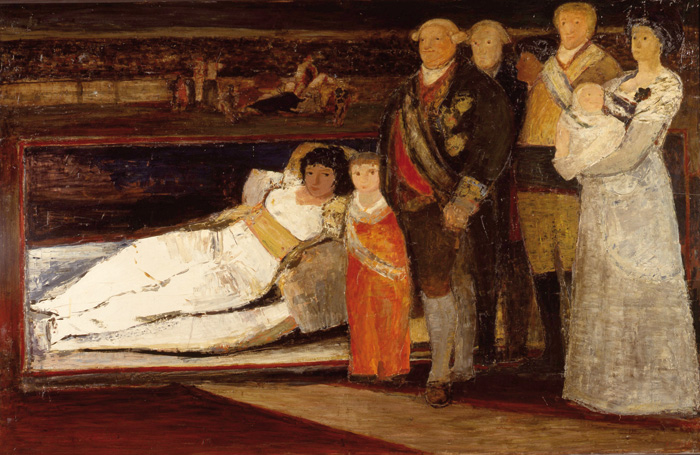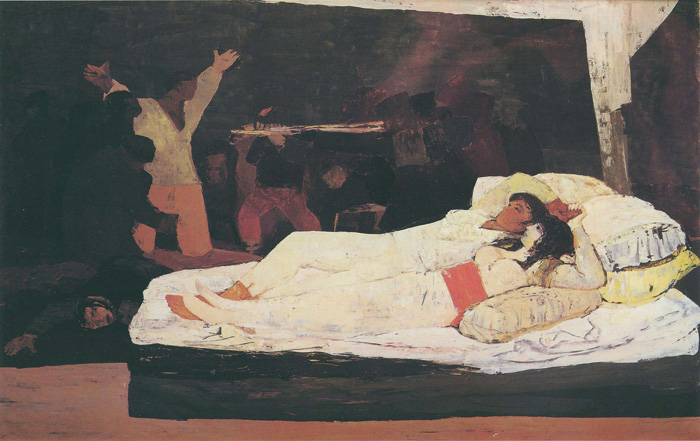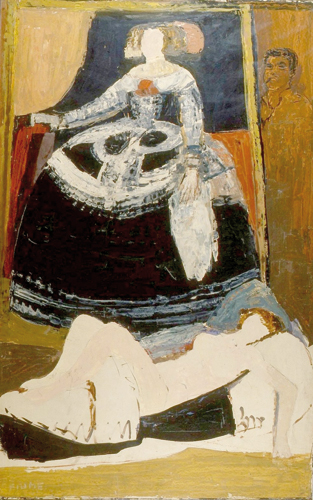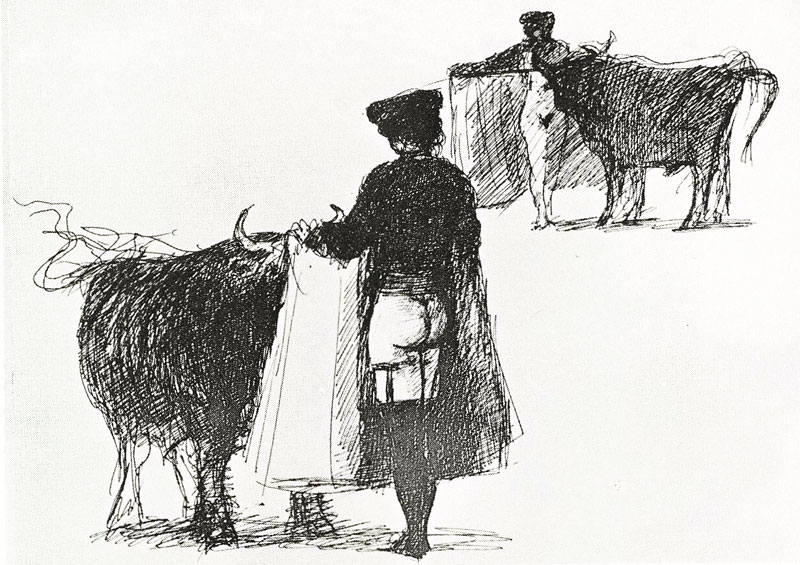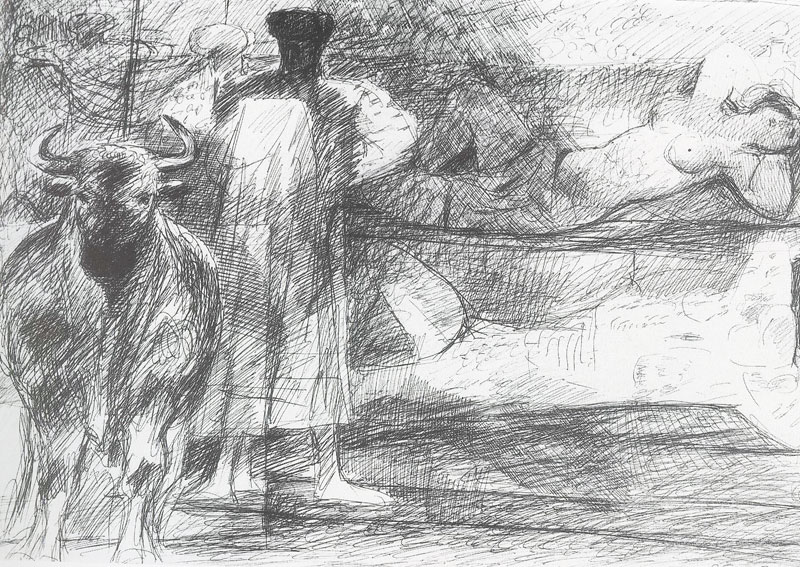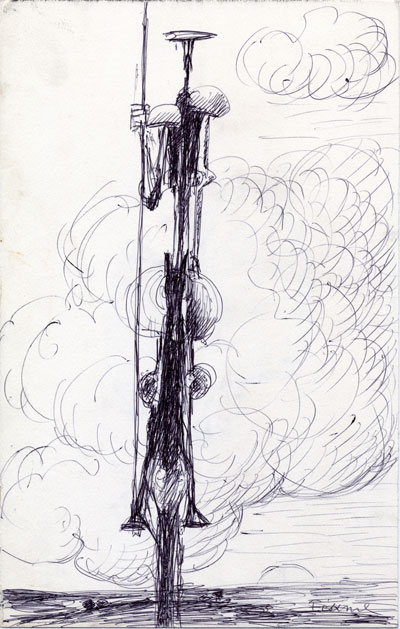THE SPANISH CYCLE
1947 · 1970
In 1958 Fiume travelled to Spain attracted by the idea of seeing the masterpieces of Spanish painting at the Prado Museum in Madrid. He was most interested in Velázquez and Goya, who were both to have a great influence on his work. As a result of his many visits to Spain Salvatore Fiume created a whole cycle of works inspired from those of the two Spanish masters. In some of them he included historical characters of the time like members of the Spanish Royal Family, the Duchess of Alba, and Goya himself portrayed in Goya’s studio. In a tribute to Velázquez a reclining nude model is portrayed next to a Velázquez painting while in the half-shadow one can recognize Fiume’s self-portrait. In another, the Spanish Royal Family appears standing next to the famous painting of the Maya Vestida. In Fiume’s last tribute to Goya the latter is portrayed standing with the Maya beside his famous painting entitled The 3rd of May 1808.
CRITICAL TEXTS
from Fiume and his Spanish friends
Salvatore Fiume at the Royal College of Spain
Bologna, 1983
…There are different ways of visiting a foreign country. The traveller wants to get there. The guest wants to stay. Only the tourist would want to have already been there and this perhaps because he wants to let his camera shoot its fill: he delegates to her the duty of freezing the images of things in the same way as I let my dog sense the smelling curiosities of the road to his pleasure. We rid ourselves of this humiliating touristic condition only if a friend is waiting for us to show us the deep life of his country. When the greatest poet of this world travelled through the other one, he did so side by side with a colleague called Virgil. Well, in his visit through Spain Fiume was guided by three friends and colleagues: Velázquez, Picasso, and above all Goya. This allowed him to travel the whole country without leaving the Prado Museum. To him who thinks that Spain is the border of the sea and carries his camera in search of folklore and geography, Fiume’s journey will seem an impossible one. Thank God Fiume has looked at our culture. He was not in search of the landscape, he was in search of the soul. This unusual remembrance of my country does not evoke Spanish scenes or landscapes but paintings, and is therefore made up of paintings squared, of paintings of paintings, which is, if one looks carefully, the opposite of copying. The Prado Museum is full with patient reproducers of masterpieces: Fiume will have certainly seen them and laughed at such an absurd artisanship of the copier concentrated on repeating the inanimate object of an artwork. The copier believes he is imitating the painter, whereas he is in fact imitating that camera I have today chosen to speak ill of: the same camera Fiume has had the precaution of leaving at home…
…I cherish of Salvatore, a memory half a century old and more. A memory of a summer afternoon in his first humble studio, in the little town of Comiso, where we both were born. I remember a sun ray aslant on an unsteady easel; and on the white of his sheet an olive tree attacked by black birds, raising its leafy fronds towards the light. I remember my confused wonder and the joy about the silvery leaves originating from his pencil, the joy about the branches suddenly twisting in the air, like the one at the time of the first tree and the first bird, in the Garden of Adam and Eve. Salvatore was then an eighteen-year-old live wire, looking like the olive tree of his drawing, except for a flash of young smile in his eyes where the first gleams of his growing into a man were being shed. On a table books piled up that I leafed through with child hands: a Spain, illustrated by Doré; a Paolo Uccello painting, another one by Piero della Francesca…there must be a reason if they were there…


